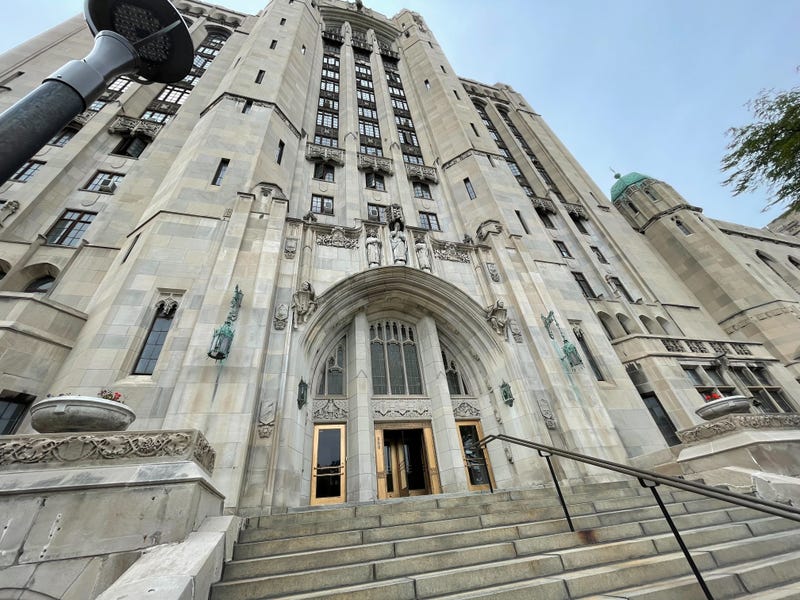
DETROIT (WWJ) -- The Detroit Masonic Temple in the Cass Corridor is as iconic as it is curious, with its Neo-Gothic style architecture and its fair share of secrets and lore.
But when it comes to this landmark’s century-long history in Detroit — what’s fact and what’s fiction?
For a special Halloween episode of The Daily J podcast, host Zach Clark and WWJ’s Annie Scaramuzzino went behind the scenes at the famed Masonic Temple to try and unravel its mysteries and misconceptions, and things got a bit “spirited” along the way.
The building is not just a concert venue
Many Detroiters have been to the Masonic Temple for a concert at one of the two venues inside the building: the Temple Theatre and the smaller Cathedral Theatre.
But the building is home to much more activity than just live music, having been built over a century ago to serve as a meeting place for the Freemasons.
The Freemasons — regarded as the oldest fraternity in the world — have quite a lengthy history in the city of Detroit, going back to the 1700s.
Around 1908, interest and membership in Masonic fraternities had grown so much in the city that the Masonic Temple Association of Detroit began to consider an expansion, opting to move from their location on Lafayette Boulevard in favor of building a new and larger facility.
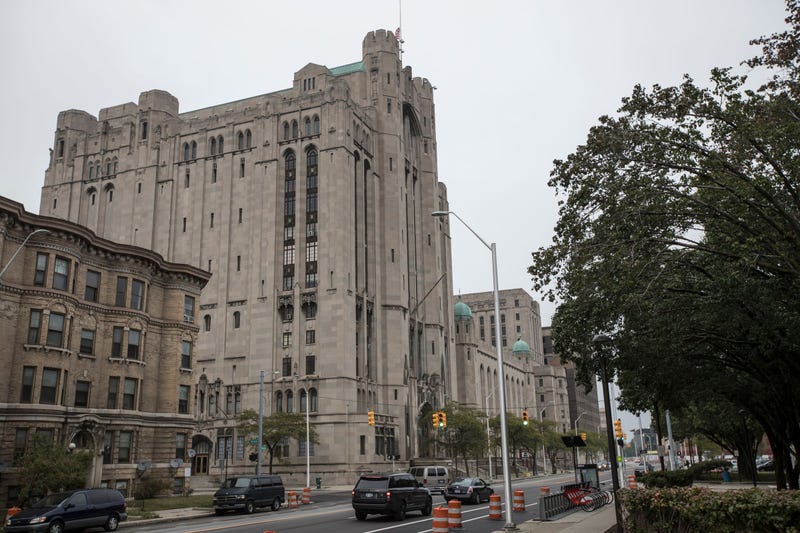
It’s also not an Albert Kahn building
American architect George D. Mason was eventually tapped to design the new Detroit Masonic Temple, and construction began on Thanksgiving Day in 1920.
The cornerstone for the building was laid on September 18, 1922, using a trowel previously used by George Washington — a Freemason himself — during the construction of the U.S. Capitol. The building was dedicated on Thanksgiving Day in 1926.
Many have thought that the building was designed by another famed Detroit architect, Albert Kahn, who is responsible for many of the city's most famous buildings.
However, Kahn was a protégée of Mason, and recommended the services of architectural sculptor Corrado Parducci, who designed and built much of the Temple’s interior.
As it stands today at 500 Temple Street in the Cass Corridor, Detroit's Masonic Temple is the largest operating Masonic Temple entire world, amassing 550,000 square feet and containing over 1,000 rooms.
These include the three theaters (one of which was never completed), along with two ballrooms, the Chapel, a Shrine building and several Lodge rooms, along with dining rooms, a cafeteria, a barber shop, 16 bowling lanes, office space, and a 17,500 square foot drill hall, which is home to the Detroit Roller Derby.
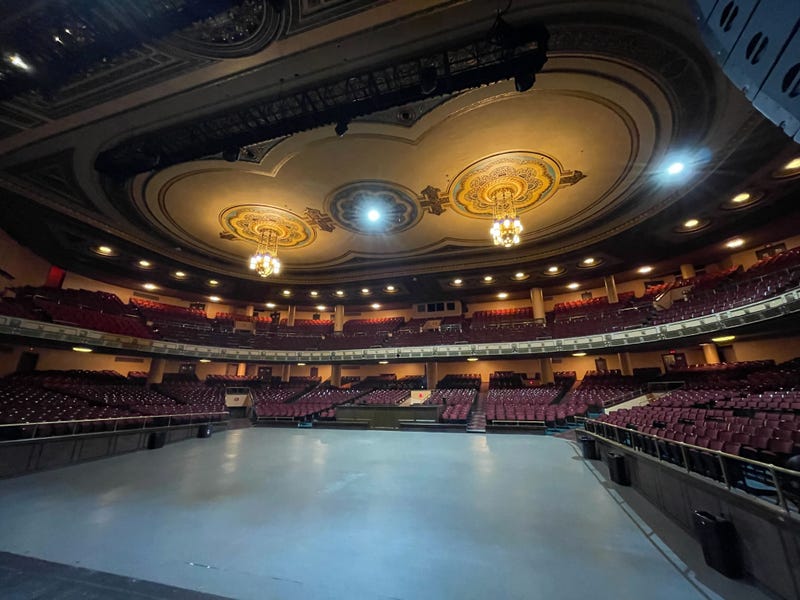
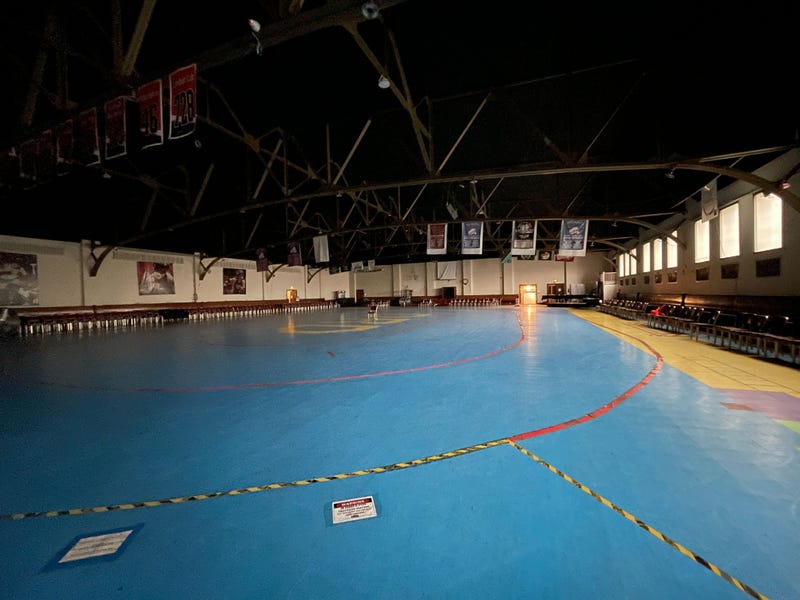
The Masons are still an active organization in Detroit to this day
Speaking with WWJ, the Masonic Temple’s chief docent Rob Moore chronicled the relevance of the Masons in Detroit and the state of Michigan overall, explaining the organization has bore witness to much of our region’s history.
“Masonry is the second oldest organization in the city of Detroit,” Moore said. “The only thing older than us in the city is Sainte Anne's Basilica.”
“Back when this was still Fort Detroit, a group of British army officers happened to be Masons, and keeping in mind that that time, this was largely wilderness,” Moore said. “Detroit was a very different place at that time, [and] it's taken on several different forms, different guises, but Michigan Masonry goes all the way back to 1764.”
“So we've been involved with the city and the state of Michigan that long,” he continued. “It wasn't until the early 1890s [that] they actually built a purpose-built Masonic Temple. At the time, there were 11 Masonic organizations in the city, [and they] pooled together their resources to build a building.”
That original building was located on Lafayette Boulevard, where the Comerica building now stands.
At the peak of the organization's popularity in the 1920s, there were a whopping 63,000 Masons in the city of Detroit.
These days, the organization remains very relevant in the city, with 15 active Masonic Lodges still calling the Masonic Temple home.
In fact, eight of the 1,037 rooms in the building are assigned specifically for Lodge meetings, which happen multiple times throughout the week.
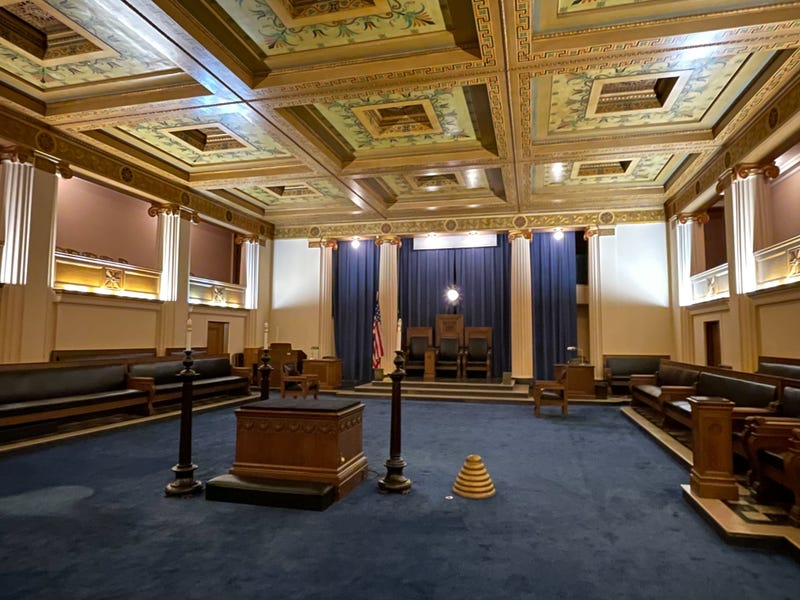
Jack White did help out financially — though there’s a little more to the story
When the Masonic Temple was reported to be in possible foreclosure in April 2013 over $152,000 in back taxes owed to Wayne County, someone unexpected stepped in to help out.
Detroit’s own Jack White showed up unannounced to the building and offered to help pay off the debt. Just a few months later, and things were square between the Masonic Temple and the county.
White, who grew up in Southwest Detroit, has a long history with the building, with his mother having worked at the Masonic as an usher over the years.
Though the singer wasn’t looking for any recognition for his generosity, the Masonic later named their smaller Cathedral Theatre and its lobby after White. However, the Masonic Temple’s Rob Moore explained when AEG became the building’s promoter in 2019, the name was changed back.

Moore also added that the Masonic Temple did have a plan in place to pay the back-taxes, and foreclosure wasn’t as imminent as it was made out to be in the media.
“Unfortunately, it hit the papers and it wasn't quite 100% accurate in terms of what was reported,” Moore explained. “So then what happened is that Jack White just showed up at the back desk and said, you know, I heard about what’s happening and I'd like to help. So he just made a very generous unsolicited donation and the rest is history.”
“We were very thankful for that,” Moore added. “It was a very generous kind of support for the building.”
These days, the Masonic Temple likely holds an even more special place in Jack White’s heart. During a performance in April 2022, White proposed to his partner Olivia Jean, and then proceeded to marry her right there on stage.
...But is it haunted?
The Masonic Temple is frequently included on lists of Detroit’s most haunted places, and even hosts ghost tours along with its historic tours.
The main ghost story is that the spirit of architect George D. Mason haunts the building. The tale goes that Mason went bankrupt during the Great Depression, and was left by his wife. Distraught, Mason then jumped from the building’s roof to his death, and his "ghost" has been accused of shutting windows, leaving the latch to the roof open, and causing items to go missing.
However, that story is entirely false. Mason did not go bankrupt and never jumped from the Masonic’s roof. He actually died in 1948 of natural causes at the age of 91 in his home in the Wilshire Apartment building on Grand Boulevard.
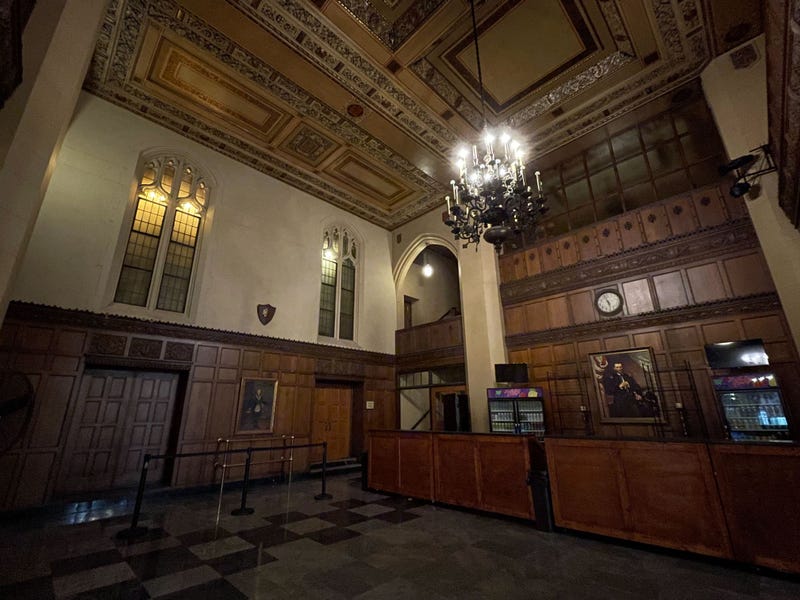
The mysterious history of the Masons might be a more likely reason many tend to believe the building is haunted, as the private organization sparks its fair share of rumors.
The unfinished parts of the building, “secret” passageways, and Gothic-style architecture certainly contribute to those feelings of an otherworldliness existing within the walls of Masonic Temple, where some have reported experiencing slamming doors, cold spots, and a general shift in energy between rooms.
"I do think the building has a living energy to it," Moore said. "I think that's what a lot of folks experience. It's all a matter of individual interpretation."
